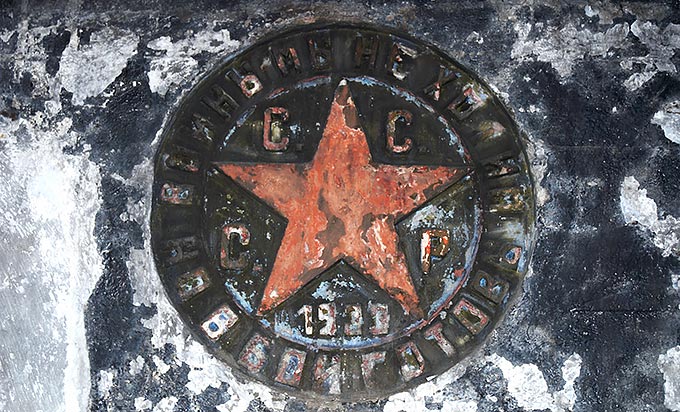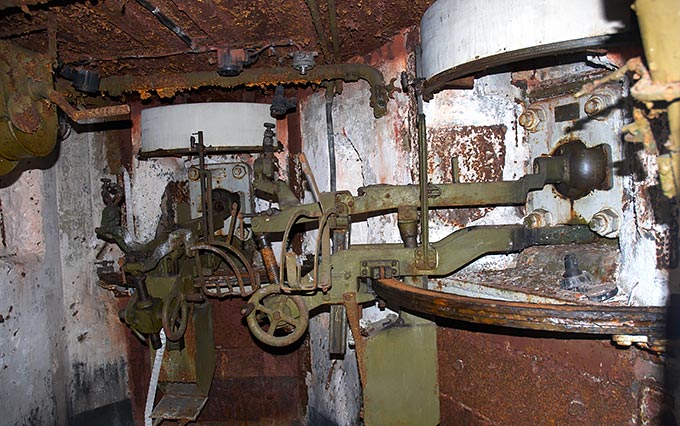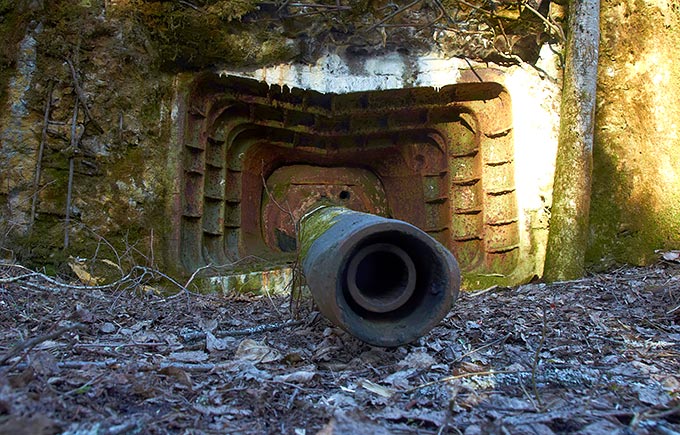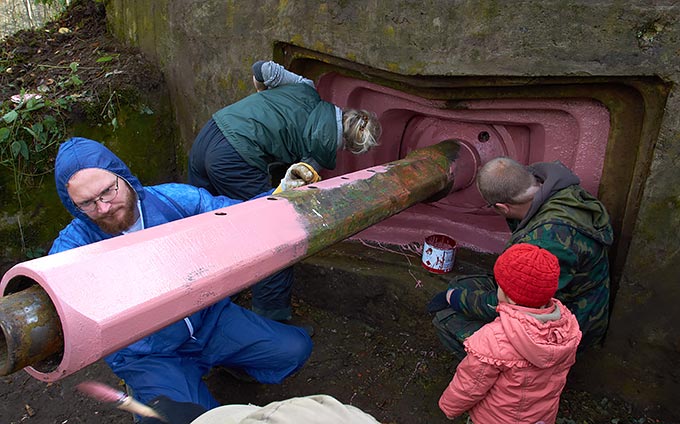Karelian Fortified Area (KaUR)
KaUR (Karelskij Ukrepljenyj Rajon) or Karelian Fortified Area is one of the mighty fortress in vicinities of St. Petersburg. Once it was a northern part of so called Stalin's line, and was intended for defending of Leningrad city (St.Petersburg) from the north. It stretches across Karelian Isthmus from Ladoga Lake to Finnish Gulf's coasts.
After the conclusion of Tartu's treaty between Soviet Russia and new born state of Finland a new border line of Soviet state passed in 30-50 km's from Leningrad city. "Narodny Komissar" (Defense Minister) Kliment Voroshilov signed the order to begin the construction of installations on the new border in 1928.
KaUR consist of two defense lines - main and rear. These defense lines consists of a chain of battalion's defensive regions (BDR). This BDR's has the sizes 3-5 kms in front and 2-3 kms in depth and was intended for one independent battalion garrison (near to 600-800 personnel). There are the 10-15 machine-gun and 1-3 artillery concrete pillboxes in the each BDR. The intervals between BDRs were covered by artillery and machine-gun fire tightly. The BDRs are covered the main roads and located on the ground so the intervals between them filled with bogs, lakes and wild places.
Concrete installations of KaUR are machine-gun blockhouse of 3,4 or 6 embrasures and were armed of 7.62 mm Maxim machine gun. They are two types - big and small, has two stores and usually were constructed without strewing of earth. The thickness of walls is near to 1.2 m., the floor - 0.8 m. The pillboxes can provide flanked and frontal fire and can cover each other (interlocking fire).
There are also the artillery half-caponier for one ore two casemates anti-tank guns of L17 system - 75/30 mm caliber. These are big two storeys installations with strewing of earth intended for covering intervals between BDR. Precise number of KaUR installations is not known because of lack of history materials. My estimation the amount of concrete installations is 300-400.
November, 30, 1939 the garrison of KaUR took part in attack to the Finnish frontier guard on the Sister river banks (Winter War). After removing the border line to the north all area became the deep rear. The arms and equipment were dismounted and removed to the new border, fighting training of the staff was fell little by little.
In July 1941 urgent works of rearming began in KaUR. July, 31 Finns troops outflanked the new constructed by Soviets Vyborg Fortified Area and began to move rapidly to Leningrad city. August they reached the old border line on the Sister river and grasped some pillboxes of advance line of KaUR. In September, 4 Beloostrov city was occupied by Finns and the biggest installation of KaUR - two guns pillbox "Millionaire" fell. But Finns could not pass further because the wide boggy space and anti-tank ditches covered by other KaUR's installations were before them now.
On the left flank of KaUR in Sestrorezk BDR Finns after few unsuccessful attacks were stopped near to Rzavaja Kanava river. On the right flank of KaUR in Elizavetinskoe BDR villages of Troizkoe and Somovo were grasped by Finns, but after two weeks fighting Finns were knocked out from there and front line stabilized till summer 1944.
June, 9-10, 1944 the big offensive of Soviet armies on the Karelian Isthmus began. The artillery of KaUR took active part in two days preliminary bombardment. June, 9 Soviet command made a decision to destroy the pillbox "Millionaire" in Beloostrov city, which was seized by Finns in 1941. It was fired with 140 203-mm shells from a distance of 800 m. "Millionaire" was not destroyed but Finns blown the pillbox up and fell back.
In 1950th years of the last century modernization of KaUR was carried out. The new systems of ventilation were installed in pillboxes, also were replaced machine-gun mountings, communication and control fire systems. L-17 artillery systems were replaced by 85/30 mm casemate artillery systems ZIF-26 of 1947 model (ZIS-53 anti-tank gun prototype) and 100/30 mm casemate artillery systems ZIF-25 of 1946 model (S-3 corps cannon prototype).
In the end of 1960th KaUR became inhibited, the locks of guns and machine-guns were removed and installations were conserved. In the last of 1995 KaUR as military unit was dissolved. All valuable property was taken out and now only gloomy abandoned concrete boxes are remained from the once mighty KaUR fortress.
Nowadays the installations of KaUR are abandoned all over and littered strongly, especially ones situated near roads and habitation places. Some pillboxes are used for dens by vagrants and criminals. Remained guns and metal equipment are being cut for the scarp metal by gogetters and local inhabitants.
Impressions and hints
It is all very cognitive. For schoolboys and for adults too. If you decide to explore all KaUR installations seriously, it could take years and years of your life.
It is desirable to visit KaUR in second half of summer for combine excursion with mushrooms and berries collection. Personal car is recommended strictly.
Some pillboxes can be used as the shelters by vagrants and criminals - be careful! Next outfits are recommended for KaUR trips: good knife in scabbard, lantern with reserve of batteries, fabric gloves, helmet, matches, stock of meal and flask with water or vodka (matter of taste).
Also see the Salpa-Line section of this site as example of utilization of war installations as museums and tourist attractions. Why not KaUR?
Land forts and fortress:
Bip Castle Gatchina Ivangorod Izborsk Kexholm Kirillov Monastery Koporye Novgorod Pechorskiy Monastery Peter&Paul Fortress Porkhov Pskov Schlisselburg Staraya Ladoga Tikhvin Vyborg Hameenlinna Hamina Kastelholm Kymenlinna Lappaenranta Raseborg Castle Savonlinna Tavetti Turku Visby Fredrikstadt Fredriksten Hegra Fort Hoytorp Fort Arensburg Narva Tallinn Antipatris Caesarea Jerusalem Latrun Fort Masada
Sea forts and fortresses:
Alexander Fort Ino Fort Krasnaya Gorka Fort Kronstadt: Kotlin isl. Kronstadt: North Forts Kronstadt: South Forts Trongsund Hanko Svartholm Sveaborg Marstrand Siaro Fort Vaxholm Oscarsborg
Artillery batteries and individual guns:
Coastal Artillery Hemso Fort
Fortified areas and defensive lines:
Karelian Fortified Area (KaUR) KrUR Leningrad Mannerheim Line Nevsky Bridgehead VT Line Harparskog Line Salpa Line Gothland
Russian
S e a r c h All news




 00-mm antitank gun in artillery bunker.
00-mm antitank gun in artillery bunker.

